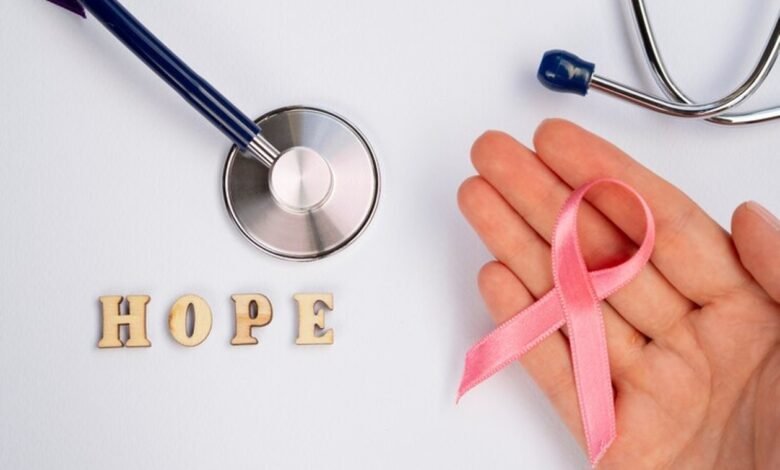How to Reduce Your Risk of Breast Cancer and Detect It Early

Breast cancer is a significant concern for women around the world. It’s the most common cancer among women, and early detection is crucial for effective treatment. In this article, we will discuss ways to reduce your risk of breast cancer and the importance of early detection.
Risk of Breast Cancer
Breast cancer occurs when cells in the breast begin to grow uncontrollably. It can start in different parts of the breast, including the milk ducts and glands. Understanding this disease is the first step in reducing your risk.
Risk Factors for Breast Cancer
Understanding the risk factors associated with breast cancer is vital for proactive healthcare and risk reduction. While some risk factors are beyond our control, others can be managed. Here are some key risk factors to consider:
Age and Gender
- Age: The risk of breast cancer increases with age. Most breast cancers are diagnosed in women over 50. However, it’s essential to note that younger women can also develop breast cancer.
- Gender: Breast cancer primarily affects women, but it can occur in men as well. Women are at significantly higher risk due to their breast tissue and hormonal changes.
Family History
- A family history of breast cancer can increase your risk. If you have close relatives, such as a mother, sister, or daughter, who have been diagnosed with breast cancer, your risk is elevated.
Genetic Mutations
- Inherited genetic mutations can substantially increase the risk of breast cancer. Two well-known gene mutations associated with breast cancer are BRCA1 and BRCA2. These mutations can be passed down from one generation to the next.
Hormone Replacement Therapy
- Long-term use of hormone replacement therapy (HRT) during menopause has been linked to an increased risk of breast cancer. This therapy typically involves taking estrogen and progesterone, and its risks and benefits should be discussed with your healthcare provider.
Lifestyle Factors
- Unhealthy Lifestyle Choices: Smoking, excessive alcohol consumption, and a sedentary lifestyle can contribute to the risk of breast cancer. Maintaining a healthy lifestyle with regular exercise and a balanced diet can help mitigate these risks.
It’s essential to remember that the presence of one or more risk factors doesn’t guarantee that an individual will develop breast cancer. Likewise, the absence of these risk factors doesn’t eliminate the possibility of the disease. Breast cancer is a complex condition influenced by a combination of factors, including genetics and environmental elements.
Understanding your personal risk factors and making informed decisions about your health, such as regular screenings and lifestyle choices, can significantly contribute to breast cancer prevention and early detection.
Read More: Breast Cancer Symptoms in Women Under 40
Early Detection: A Lifesaver
Early detection of breast cancer significantly improves the chances of successful treatment. Here are ways to detect it early:
Early detection is a critical component in the fight against breast cancer. Detecting breast cancer in its early stages can make a profound difference in treatment outcomes and survival rates. Here’s why early detection is often referred to as a lifesaver:
Self-Exams
Breast self-exams are a simple yet effective way for individuals to monitor their breast health. By performing regular self-exams, you become familiar with the normal look and feel of your breasts. If any changes or abnormalities occur, such as lumps, skin changes, or nipple discharge, you can catch them early and seek medical attention promptly. Early detection through self-exams allows for more straightforward and less aggressive treatment options.
Clinical Breast Exams
Clinical breast exams conducted by healthcare professionals are another vital step in early detection. These exams are typically recommended every three years for women in their 20s and 30s and annually for women aged 40 and older. During a clinical breast exam, a healthcare provider will carefully examine the breasts and surrounding areas for any signs of breast cancer. This thorough evaluation helps ensure that potential issues are identified as early as possible.
Mammograms
Mammograms are powerful tools for detecting breast cancer, especially in its early stages when it may not yet be palpable. Regular mammograms are typically recommended for women aged 40 and older, although the exact timing can vary depending on individual risk factors. These X-ray images of the breast can reveal abnormalities such as tumors, calcifications, or other changes in breast tissue. Detecting these issues early allows for prompt diagnosis and treatment.
The significance of early detection can’t be overstated. When breast cancer is detected at an early stage, the chances of successful treatment and survival are significantly improved. Treatment options are often less aggressive, and the likelihood of a full recovery is greater.
It’s important to remember that early detection not only saves lives but also reduces the physical and emotional burden of more advanced breast cancer. Regular self-exams, clinical breast exams, and mammograms are powerful tools in the battle against breast cancer. These screenings empower individuals to take control of their health and well-being, making early intervention possible and, in many cases, life-saving.
Reducing Your Risk
Reducing your risk of breast cancer involves making positive lifestyle choices. Here are some steps you can take:
Reducing the risk of breast cancer is essential for maintaining good health. While there is no guaranteed way to prevent breast cancer, there are several steps you can take to lower your risk. Here are some practical strategies:
Healthy Diet and Regular Exercise
Maintaining a healthy weight and engaging in regular physical activity can significantly lower your risk of breast cancer. A balanced diet rich in fruits, vegetables, whole grains, and lean proteins is key. Avoiding excessive consumption of processed foods, sugary drinks, and high-fat foods is essential. Exercise, such as brisk walking, swimming, or jogging, for at least 150 minutes a week can make a substantial difference in reducing risk.
Limit Alcohol Consumption
Excessive alcohol consumption is a known risk factor for breast cancer. If you choose to drink alcohol, it’s important to do so in moderation. The American Cancer Society recommends limiting alcohol to one drink per day for women.
Breastfeeding
Breastfeeding can offer both short-term and long-term benefits when it comes to breast cancer risk. It not only provides essential nutrients for your baby but also reduces the risk of breast cancer for the mother. The longer you breastfeed, the greater the protective effect.
Avoiding Exposure to Radiation
Minimizing your exposure to unnecessary radiation is another way to reduce your breast cancer risk. For instance, limit the number of diagnostic X-rays and other medical procedures that involve radiation. If you have concerns about exposure to radiation, discuss them with your healthcare provider.
Hormone Therapy
Hormone replacement therapy (HRT) can be associated with an increased risk of breast cancer. If you are considering HRT for managing menopausal symptoms, it’s crucial to have a thorough discussion with your healthcare provider about the risks and benefits. In some cases, alternative treatments or lifestyle changes may be a better choice.
Taking these steps can contribute to reducing your risk of breast cancer. While there are no guarantees, a healthy lifestyle and informed choices can go a long way in maintaining breast health. Regular check-ups, breast self-exams, and appropriate screenings are also crucial in the early detection of any potential issues.
Read More: 7 Things Doctors Wish You Knew About Metastatic Breast Cancer
Conclusion
Breast cancer is a serious health concern, but by understanding the risk factors and taking steps to reduce your risk, you can protect your health. Early detection through self-exams and mammograms can be a lifesaver. By making healthy lifestyle choices, you can take control of your well-being.
FAQs
1. How common is breast cancer?
Breast cancer is the most common cancer in women worldwide.
2. What age should I start getting mammograms?
Women aged 40 and older should have annual mammograms.
3. Can men get breast cancer?
Yes, although it’s much less common, men can also get breast cancer.
4. Are all breast lumps cancerous?
No, not all breast lumps are cancerous. Many lumps are benign, but it’s essential to get them checked by a healthcare professional.
5. What can I do to support breast cancer awareness?
You can support breast cancer awareness by participating in fundraisers, sharing information, and encouraging regular screenings.







